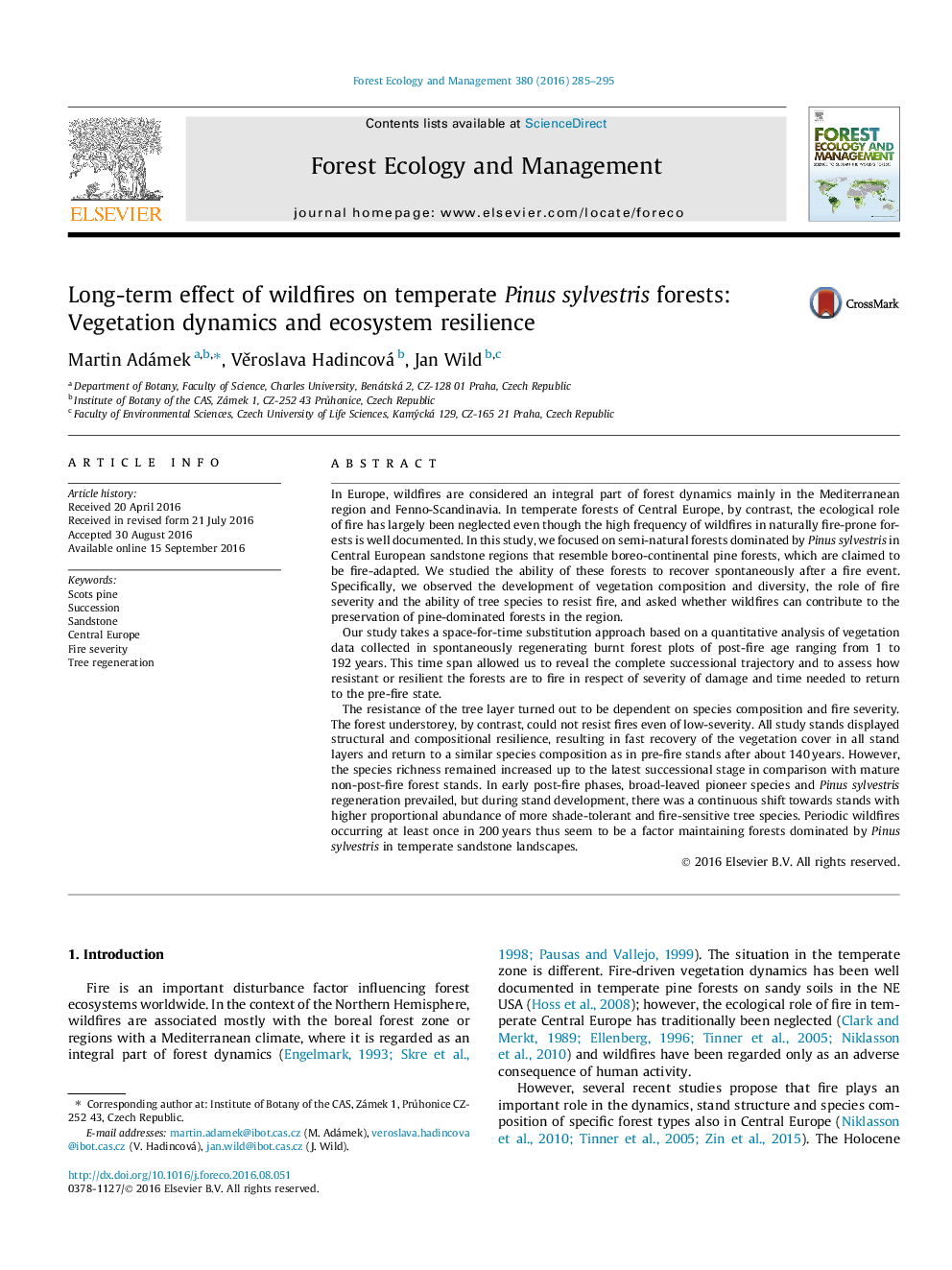| کد مقاله | کد نشریه | سال انتشار | مقاله انگلیسی | نسخه تمام متن |
|---|---|---|---|---|
| 4759683 | 1421378 | 2016 | 11 صفحه PDF | دانلود رایگان |

- We explored post-fire succession in Scots pine forests of Central Europe.
- The resistance of the tree layer depended on species composition and fire severity.
- Pine forests under study displayed high structural and compositional resilience.
- Strongly regenerating Scots pine got gradually replaced by shade-tolerant species.
- Periodic fires help maintain pine forests in Central European sandstone landscapes.
In Europe, wildfires are considered an integral part of forest dynamics mainly in the Mediterranean region and Fenno-Scandinavia. In temperate forests of Central Europe, by contrast, the ecological role of fire has largely been neglected even though the high frequency of wildfires in naturally fire-prone forests is well documented. In this study, we focused on semi-natural forests dominated by Pinus sylvestris in Central European sandstone regions that resemble boreo-continental pine forests, which are claimed to be fire-adapted. We studied the ability of these forests to recover spontaneously after a fire event. Specifically, we observed the development of vegetation composition and diversity, the role of fire severity and the ability of tree species to resist fire, and asked whether wildfires can contribute to the preservation of pine-dominated forests in the region.Our study takes a space-for-time substitution approach based on a quantitative analysis of vegetation data collected in spontaneously regenerating burnt forest plots of post-fire age ranging from 1 to 192Â years. This time span allowed us to reveal the complete successional trajectory and to assess how resistant or resilient the forests are to fire in respect of severity of damage and time needed to return to the pre-fire state.The resistance of the tree layer turned out to be dependent on species composition and fire severity. The forest understorey, by contrast, could not resist fires even of low-severity. All study stands displayed structural and compositional resilience, resulting in fast recovery of the vegetation cover in all stand layers and return to a similar species composition as in pre-fire stands after about 140Â years. However, the species richness remained increased up to the latest successional stage in comparison with mature non-post-fire forest stands. In early post-fire phases, broad-leaved pioneer species and Pinus sylvestris regeneration prevailed, but during stand development, there was a continuous shift towards stands with higher proportional abundance of more shade-tolerant and fire-sensitive tree species. Periodic wildfires occurring at least once in 200Â years thus seem to be a factor maintaining forests dominated by Pinus sylvestris in temperate sandstone landscapes.
494
Journal: Forest Ecology and Management - Volume 380, 15 November 2016, Pages 285-295